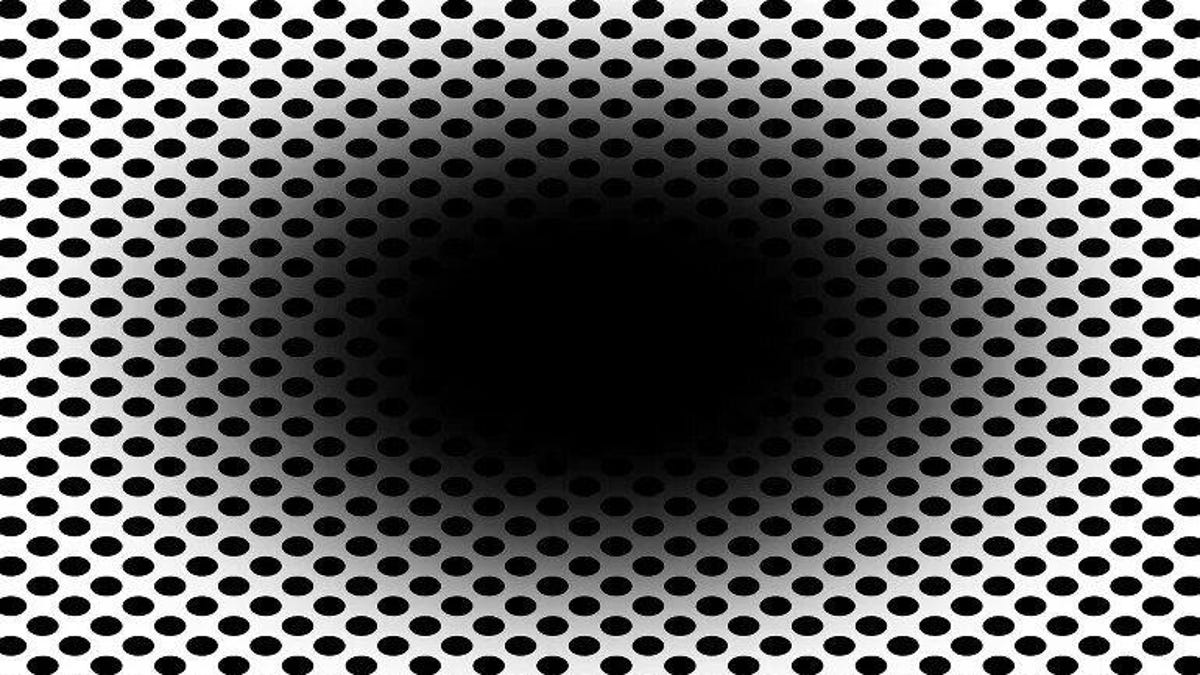Scientists Explain Why This 'Expanding Black Hole' Optical Illusion Is So Trippy
Your pupils might speak louder than words when it comes to a new piece of brain-melting artwork.
When you look at an optical illusion, you might feel it scratching your brain in all the right places -- or maybe all the wrong ones. Magic Eye artwork is something like a mind massage. But if you stare long enough at M.C. Escher's never-ending Penrose stairs, it will disorient you into oblivion.
Well, take a deep breath, because a crew of psychologists have yet another trippy mind game for you.
It's described as an "expanding black hole." But in fact, it's not expanding at all. It's static.
Do you see that dark ellipse steadily getting bigger in the image above, sort of imitating what it'd be like if you were falling into it? I know I do. And it's blowing my mind. Don't worry, though. According to the team's research, published Monday in the journal Frontiers in Human Neuroscience, there's far more than imagination at play when we glance at this abstract work of art.
Since the illusion implies a change in light, aka the expanding darkness bit, the study authors write that it's "possible to probe the impact of the illusion not only via an observer's phenomenology, consisting of conscious verbal reports, but also by examining a concurrent, involuntary, physiological index: the diameter of the eye pupil."
In other words, this just means if you're seeing a ballooning black hole right now, your pupils are probably dilating, or increasing in diameter, as they would if the hole were legitimately expanding. Your pupils are being tricked.
"The 'expanding hole' is a highly dynamic illusion," Bruno Laeng, a professor at the Department of Psychology of the University of Oslo and first author of the study, said in a statement. "The circular smear or shadow gradient of the central black hole evokes a marked impression of optic flow, as if the observer were heading forward into a hole or tunnel."
Do you see the purple dots spiraling? Well, try fixing your eye on one area of the picture and that'll stop them pretty quickly. But this again is a typical optical illusion.
Even if you didn't say you saw the illusion moving before you, your eyes may be silently giving you away -- and this realization is arguably more evidence that we might want to rethink the scientific value of our tiny optical voids. Our pupils, in a sense, seem to be a pretty strong gateway into the human mind. A recent study, for instance, also found that pupil dilation could indicate whether one has aphantasia, or lack of "mind's eye."
This simply refers to one's ability to viscerally picture objects in their mind without that object actually being in front of them. Formerly, aphantasia was a characteristic only reported with verbal accounts and often dismissed as delusion because we didn't have any biological proof of the phenomena.
"While it was already known that imagined objects can evoke so-called 'endogenous' changes in pupil size, we were surprised to see more dramatic changes in those reporting more vivid imagery," one researcher said.
A version of M.C. Escher's Penrose staircase.
But getting back to optical illusions, Laeng and fellow study researchers further bolstered their point about pupillary response by measuring how 50 men and women with normal vision reacted to the new, trance-like illusion. And, to shake things up a bit, they offered the subjects this illusion in a variety of colors -- some were asked to view blue, green, cyan, magenta, red, yellow or white holes (and surrounding dots) instead of the standard black one we're looking at.
The results basically showed that the subjects' pupils did literally activate in response to the illusion, though that reflex was most effective when depicted objects were black. In participants who could see the expansion happening, it seemed that the darkness promoted strong pupil dilations, but intriguingly, colored versions prompted the subjects' pupils to instead constrict, which means they got smaller in diameter.
Notably, the study adds a caveat that subjective reports of hole expansion, specifically for the black version of the image, greatly differed from subject to subject. The researchers also said they still aren't sure why some people can't quite see the expanding hole while others can.
In the future, Laeng said the team hopes to dissect whether other biological reflexes could "throw light" on how humans explore such mind-bending imagery.
There's also the question of whether this sort of involuntary, illusion-induced pupil reaction happens to other species, too. I can only wonder if, as he sits behind me watching me write this article, my cat is also getting the brain-scratchy feeling, pupils dilating due to the mesmerizing black hole pic above.


